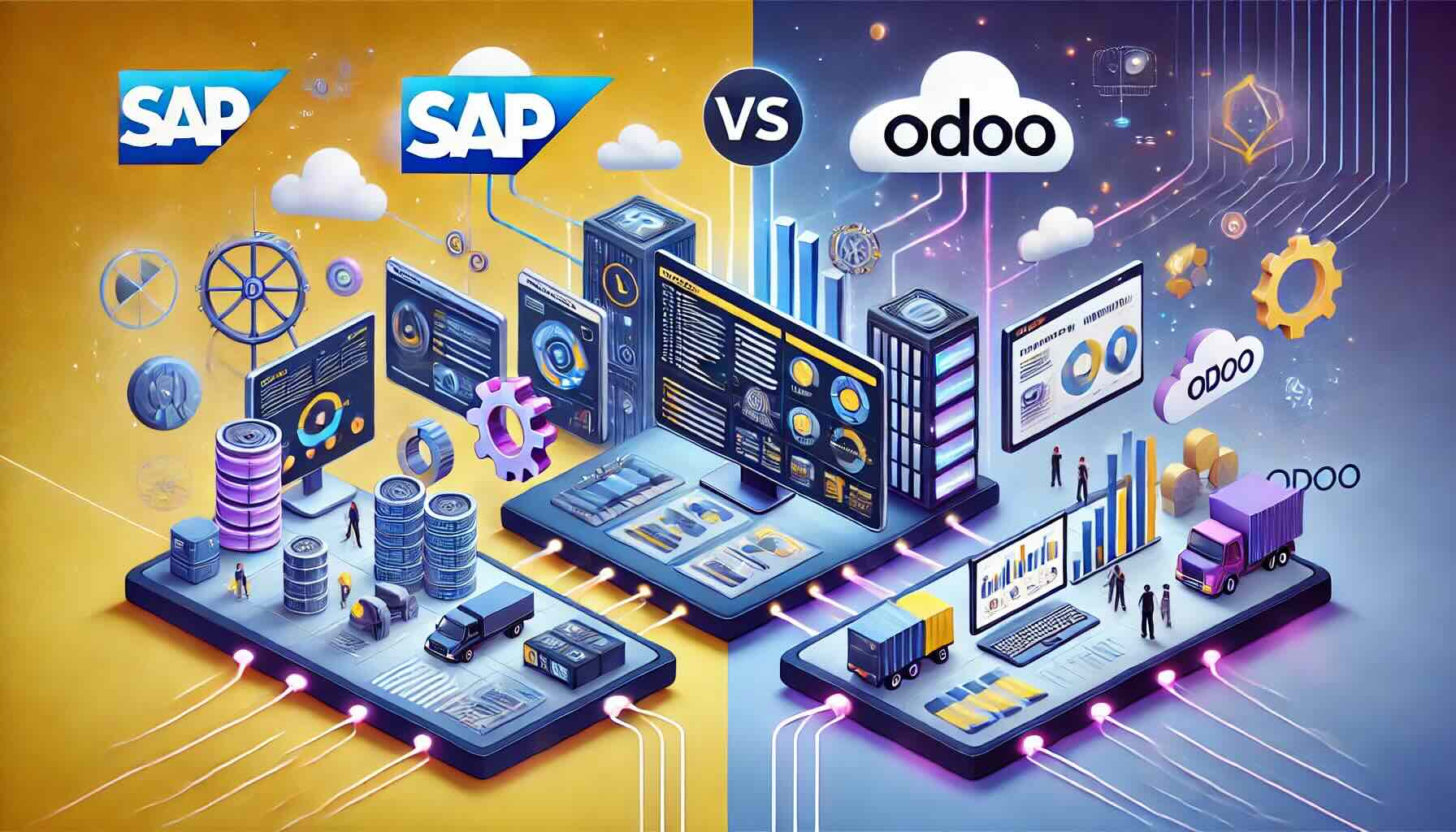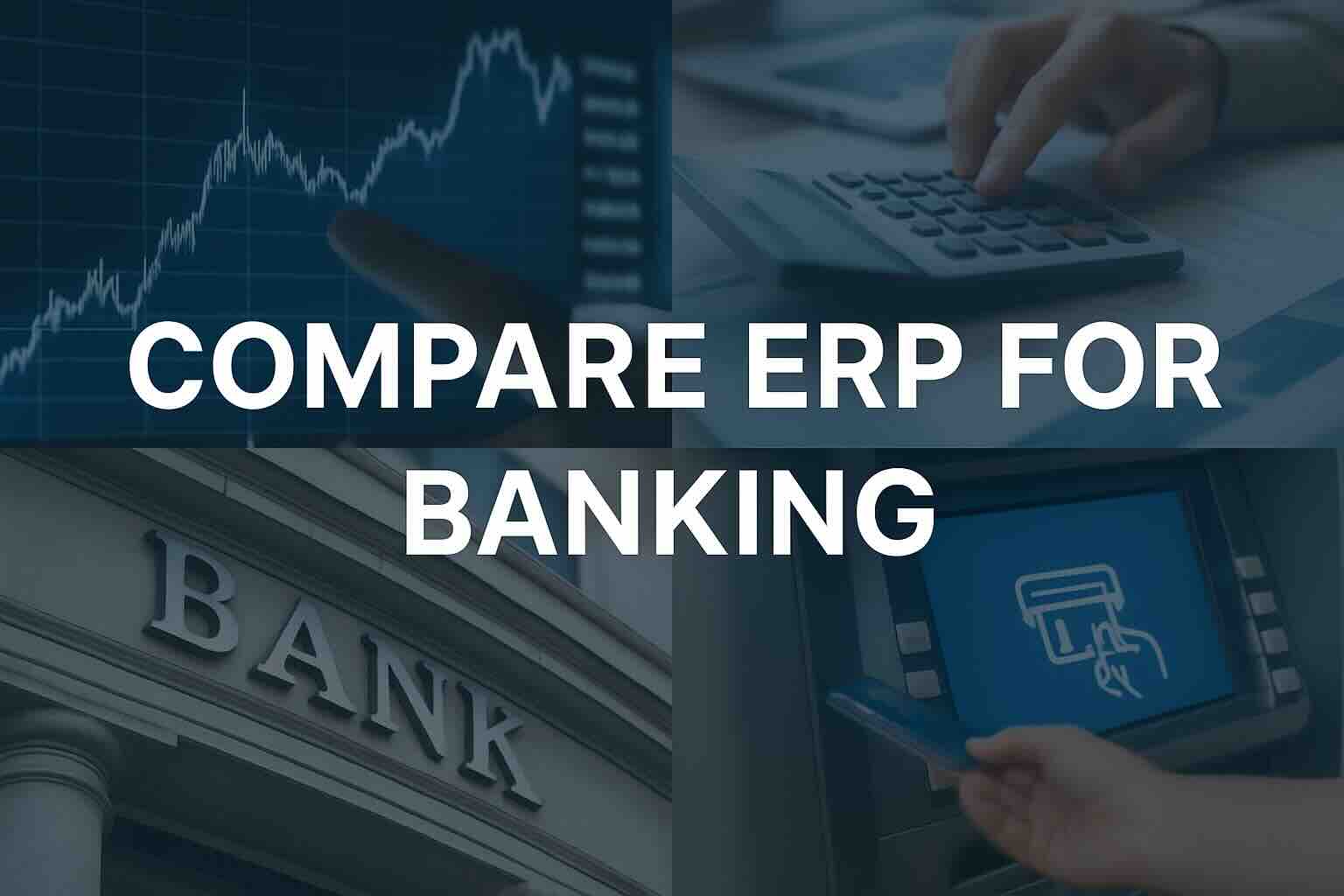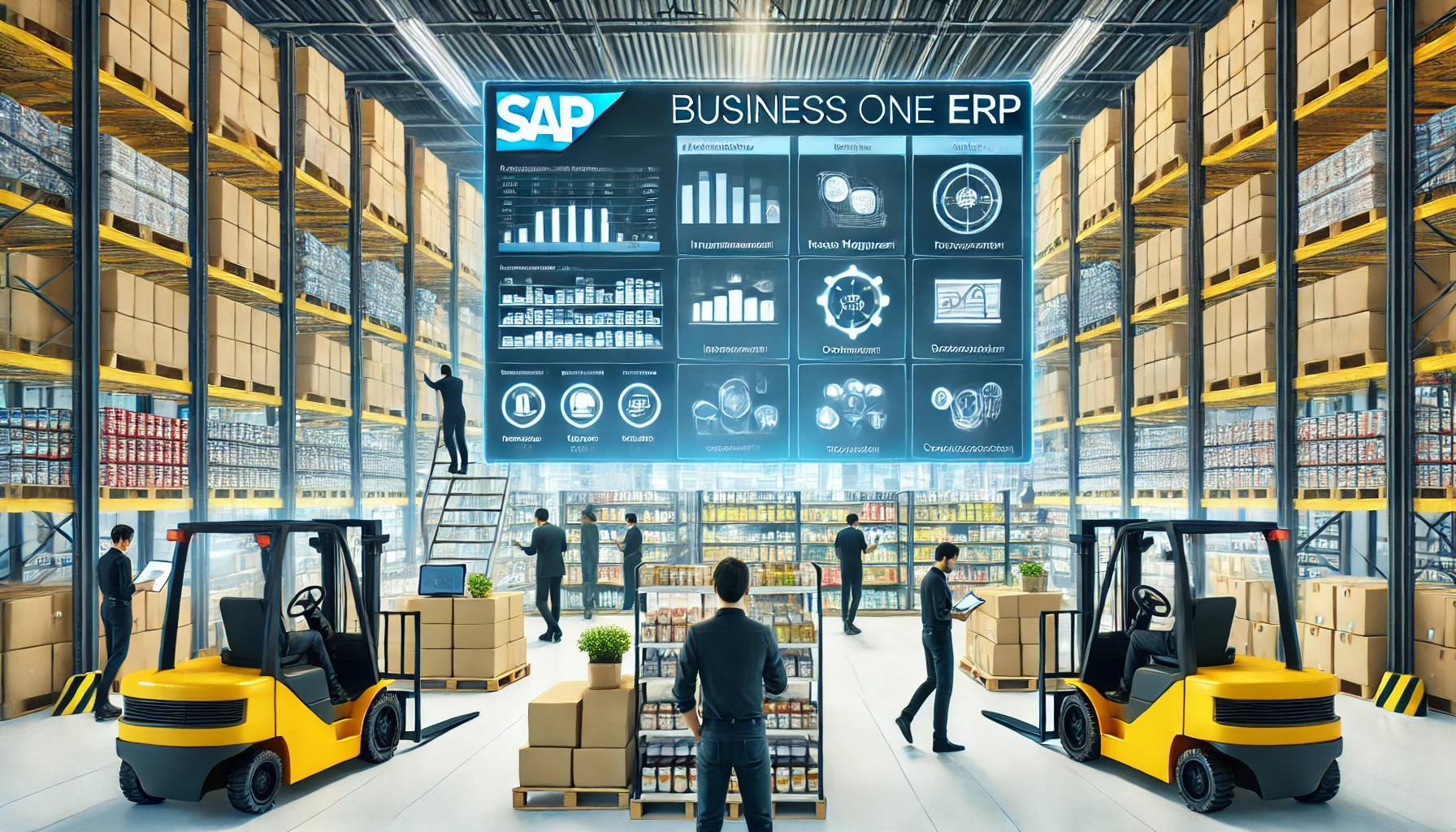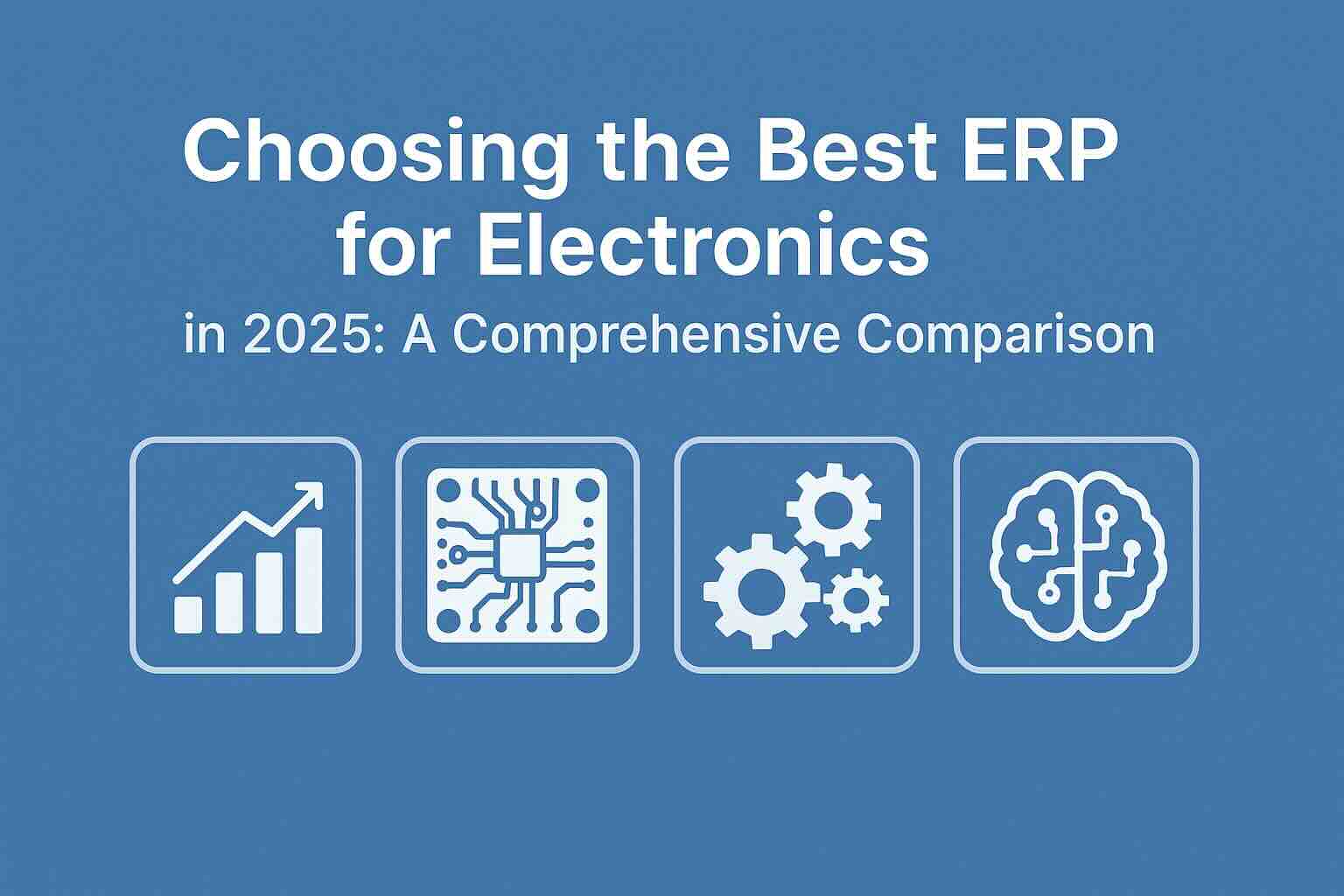SAP vs Odoo: A Comprehensive Comparison of ERP Solutions

When it comes to Enterprise Resource Planning (ERP) software, SAP and Odoo are two prominent contenders. Both offer robust solutions that cater to the needs of businesses of all sizes, but they approach ERP in different ways, each with its unique strengths and challenges. This article delves into the SAP vs Odoo debate, examining their features, capabilities, and suitability for various business environments.
Overview of SAP and Odoo
SAP is a giant in the ERP space, renowned for its extensive and complex software solutions tailored to large enterprises. Founded in 1972, SAP has grown to become the go-to ERP provider for organizations seeking comprehensive, integrated systems that cover virtually every aspect of business operations, from finance and human resources to supply chain management and customer relationship management.
Odoo, on the other hand, is a more recent player in the ERP field. Originally launched as OpenERP in 2005, Odoo has rapidly evolved into a versatile and modular ERP system. Unlike SAP, Odoo targets small to medium-sized enterprises (SMEs) and prides itself on being highly customizable and user-friendly. Its open-source nature allows businesses to tailor the software to their specific needs without the heavy financial burden often associated with large-scale ERP systems.
Key Features Comparison
1. Functionality and Modules
SAP:
- Extensive Module Offering: SAP provides a vast array of modules, covering nearly every business function. These include SAP S/4HANA for finance, SAP SuccessFactors for HR, SAP Ariba for procurement, and many others.
- Industry-Specific Solutions: SAP offers specialized solutions for various industries, from automotive to healthcare, ensuring that the software meets industry-specific regulations and practices.
- Complex Integrations: SAP’s modules are deeply integrated, allowing for seamless data flow across departments and functions. This makes it ideal for large, complex organizations with diverse needs.
Odoo:
- Modular Structure: Odoo offers over 30 core modules and 16,000 third-party apps, which can be added as needed. This modular approach is particularly beneficial for SMEs, allowing them to implement only the necessary features.
- Ease of Use: Odoo’s user-friendly interface and simple navigation make it accessible to businesses without extensive IT resources.
- Flexibility: As an open-source platform, Odoo allows for significant customization. Businesses can modify modules or create new ones to fit their specific requirements.
2. Customization and Scalability
SAP:
- Highly Customizable: SAP is known for its extensive customization options, but these often require substantial time, effort, and expertise. Customization typically involves SAP’s ABAP programming language, which may necessitate hiring specialized developers.
- Scalability: SAP is designed for scalability, making it a preferred choice for large enterprises and multinational corporations. It can handle vast amounts of data and complex business processes, growing alongside the business.
Odoo:
- Open-Source Flexibility: Odoo’s open-source nature allows for easy customization. Developers can access the source code to make modifications, or utilize Odoo Studio for no-code customizations.
- Scalable for SMEs: While Odoo is scalable, it is particularly well-suited to SMEs. It can grow with the business, but there might be limitations when scaling to very large enterprises with highly complex needs.
3. Cost and Implementation
SAP:
- High Cost: SAP is one of the most expensive ERP systems on the market. The cost includes licensing fees, implementation, and ongoing maintenance, which can be significant.
- Lengthy Implementation: Implementing SAP can be a lengthy process, often taking months or even years for full deployment. This is due to the complexity of the system and the need for extensive customization and integration.
Odoo:
- Cost-Effective: Odoo is more affordable, especially for small and medium businesses. Its open-source version is free, with paid versions offering additional support and features at a lower cost than SAP.
- Faster Implementation: Odoo’s modular approach allows for quicker implementation. Businesses can start with a few modules and expand as needed, reducing initial setup time and costs.
4. User Experience and Support
SAP:
- Complex User Interface: SAP’s interface is powerful but can be overwhelming, especially for new users. It often requires significant training to use effectively.
- Comprehensive Support: SAP offers extensive support services, including 24/7 customer support, dedicated account managers, and a vast library of documentation and resources.
Odoo:
- User-Friendly Design: Odoo’s interface is modern, intuitive, and easy to navigate, making it accessible even for users with minimal ERP experience.
- Community and Vendor Support: Odoo benefits from a large community of developers and users who contribute to its continuous improvement. Support is available through Odoo partners, with options for professional services and enterprise-level support.
Which Is Right for Your Business?
The choice between SAP and Odoo depends largely on the size and complexity of your business, as well as your budget and specific needs.
- SAP is ideal for large enterprises with complex operations and the budget to support a comprehensive, integrated ERP system. Its deep functionality and industry-specific solutions make it a robust choice for businesses needing advanced capabilities and scalability.
- Odoo is best suited for small to medium-sized businesses looking for a flexible, affordable, and easy-to-use ERP system. Its modularity allows businesses to implement only what they need, making it a cost-effective solution that can grow with the company.
Conclusion: SAP vs Odoo
In the SAP vs Odoo debate, there is no one-size-fits-all answer. SAP offers unparalleled depth and integration for large enterprises, while Odoo provides flexibility, ease of use, and affordability for SMEs. Understanding your business’s unique needs, budget, and growth plans will help you make the right decision between these two powerful ERP solutions.
To compare SAP & Odoo with 100s of other ERP solutions, you can use our new AI-powered Compare ERP tool. It’s free to use and you get a guaranteed discount on your first year’s licence fees with a referral from Compare ERP.









